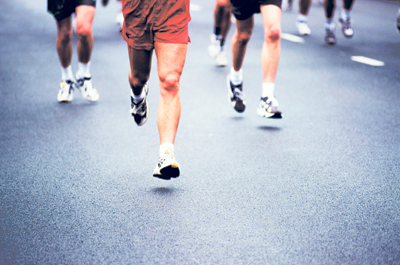Rallying for a cause
Katie White is a student of USU. Like many of her peers here, she is an excellent student, has plenty friends and a bright future ahead of her. However, unlike most of her fellow students, White also has a mother with multiple sclerosis, or MS. Katie and her family has endured the ramifications of their mother’s illness for years, which has been a long and difficult journey for all of them.
In recent years, White has decided to make an effort in helping her mother’s condition. She and other friends and family have courageously set themselves to the task of raising research funds and awareness of MS, in hopes of finding a cure.
“Anyone who knows my mother, Carmel, knows how genuinely wonderful she is,” White said. “She has been through a lot of trials in this life and has handled them with the upmost amount of faith, patience and grace. She has yet to let anything keep her down, including MS. She is a professor, and when not teaching, she’s doing research on how MS and other chronic illnesses affect young mothers, like it affected her. She has had MS since I was born but was not diagnosed until I was 11 years old.”
The fight will be long but worth it to help better Carmel’s life and the lives of others inflicted with MS.
According to the National MS Society, multiple sclerosis is a chronic, often disabling disease that attacks the central nervous system, which is made up of the brain, spinal cord and optic nerves. Symptoms may be mild, such as numbness in the limbs, or severe, such as paralysis or loss of vision. The progress, severity and specific symptoms of MS are unpredictable and vary from one person to another.
Research for a cure has grown immensely in the last decade or so. The National MS Society is a driving force in the continued search for prevention and treatment of this erratic brain and spinal cord disease. Those suffering from it often have a variety of symptoms, such as fatigue, numbness, pain, vision problems, depressions, spasticity. Anyone inflicted must begin extensive treatment regiments quite soon, but, unfortunately, these treatments do only that: treat, not cure. There is no way to eradicate the system of MS, only attempted maintenance.
Outside of health care researchers, the opportunities to get involved in finding a cure are surprisingly vast. One of the most prominent prospects for students and their families to get involved is through Walk MS.
“Walk MS has become a rallying point of the MS movement, creating a community of shared commitment determined to end MS by raising funds and celebrating hope for the future,” said Becky Woolley, director of the team raising and sponsoring the National MS Society’s Utah chapter. “Walk MS is a day that allows people to come together and be part of a movement by and for the 400,000 Americans with MS. Established in 1989 as the society’s only simultaneous national fundraising event and key awareness building weekend, Walk MS attracted 42,000 participants at 42 sites to raise $4 million. Since that time, the event has grown to attract over 200,000 walkers in nearly 600 locations, covering all 50 states who in 2009 raised over $44 million for the MS cause.”
Ogden had the great honor of hosting a walk a few weeks ago on April 10. Scheduling conflicts led to White being unable to take part in the Ogden walk, but she now plans to complete a walk in Cedar City on May 1.
“Although I’ve done the walks for more than three years,” White said, “for the sake of the hundreds of thousands of people that suffer from MS, I have to admit my motivation is selfish. I do it for my mother. I am not naive and realize that it may be years and years before there is a cure. Possibly past both my mother’s and my lifetime. But wouldn’t it be wonderful if there was a cure found in our lifetimes? I am not a scientist or doctor, I don’t have the potential to actually find the cure. Raising money, spreading awareness and giving support to those with the disease is all I can do for now.”
One in every 300 Utahns is affected by MS in some way or other. It’s a tragic trial that befalls many, but many have the chance to make a difference and help discover a cure. Participate in a walk, donate time and energy to end this debilitating disease.
– jess.wallace@aggiemail.usu.edu

